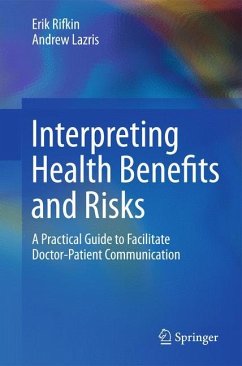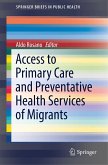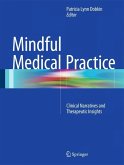This timely guide to communication in patient-centered medicine argues for greater clarity in explaining health risks versus benefits of an array of screening tests, procedures, and drug regimens. It reviews the growing trend toward patients' involvement in their own care, particularly in terms of chronic conditions, and details approaches physicians can use to prepare patients (and themselves) for collaborative decision-making based on informed choices and clear, meaningful knowledge. Chapters apply this lens to a wide range of common interventions as contentious as estrogen replacement therapy and antibiotics, and as widely prescribed as the daily aspirin and the annual physical. With this goal in mind, the authors also introduce an innovative decision-making tool that translates risks and benefits into a clear graphic format for fewer chances of miscommunication or misunderstanding.
Among the topics covered:
Involving the patient in decision making.Towards a universal decision aid.BRCT: the Benefit/Risk Characterization Theater.Breast Cancer Screening-Mammograms.Prostate Cancer Screening.Colon cancer screening with colonoscopy.Screening for and treating dementia.Statins, cholesterol, and coronary heart disease.
Physicians in family and internal medicine will find Interpreting Health Benefits and Risks: A Practical Guide to Facilitate Doctor- Patient Communication a valuable resource for communicating with patients and new possibilities for working toward their better health and health education.
This book considers several common and important situations where faulty decision-making makes overtreatment a serious risk. Clear, fair, referenced, and useful information is provided. And a powerful intuitive technique is introduced which allows patient and doctor to talk as equals as they work together in the exam room. The authorsemphasize that some patients who have been fully educated will still accept high risks of harm for a small chance of avoiding premature death. But as this book is accepted and its ideas and technique are extended, I feel sure that net harm to patients will be curtailed. And what is more, the integrity of the decision-making process will be improved.
-Thomas Finucane, MD, Professor of Medicine, Division of Gerontology and Geriatric Medicine, The Johns Hopkins University School of Medicine
Among the topics covered:
Involving the patient in decision making.Towards a universal decision aid.BRCT: the Benefit/Risk Characterization Theater.Breast Cancer Screening-Mammograms.Prostate Cancer Screening.Colon cancer screening with colonoscopy.Screening for and treating dementia.Statins, cholesterol, and coronary heart disease.
Physicians in family and internal medicine will find Interpreting Health Benefits and Risks: A Practical Guide to Facilitate Doctor- Patient Communication a valuable resource for communicating with patients and new possibilities for working toward their better health and health education.
This book considers several common and important situations where faulty decision-making makes overtreatment a serious risk. Clear, fair, referenced, and useful information is provided. And a powerful intuitive technique is introduced which allows patient and doctor to talk as equals as they work together in the exam room. The authorsemphasize that some patients who have been fully educated will still accept high risks of harm for a small chance of avoiding premature death. But as this book is accepted and its ideas and technique are extended, I feel sure that net harm to patients will be curtailed. And what is more, the integrity of the decision-making process will be improved.
-Thomas Finucane, MD, Professor of Medicine, Division of Gerontology and Geriatric Medicine, The Johns Hopkins University School of Medicine
"This book offers a visual tool to empower and help the patient think about why decisions are being made with respect to various screenings, tests, or interventions. ... I think that this model could be considered as we train our students, residents, and fellows. ... The visual chart provides another means to empower the patient (and the patient's family) in patient-centered care." (Stella King, Family Medicine, Vol. 50 (2), February, 2018)
"This book is dedicated to explaining the risks of illness or therapeutic interventions and the associated benefits of interventions. ... Clinicians of all levels can use this book to understand risks and benefits and then to employ the models to help patients understand the concepts. ... This is a uniquely exceptional book on communication between patients and medical personnel. ... This is an outstanding book for every academic and teaching institution." (Vincent F. Carr, Doody's Book Reviews, April, 2015)
"This book is dedicated to explaining the risks of illness or therapeutic interventions and the associated benefits of interventions. ... Clinicians of all levels can use this book to understand risks and benefits and then to employ the models to help patients understand the concepts. ... This is a uniquely exceptional book on communication between patients and medical personnel. ... This is an outstanding book for every academic and teaching institution." (Vincent F. Carr, Doody's Book Reviews, April, 2015)








